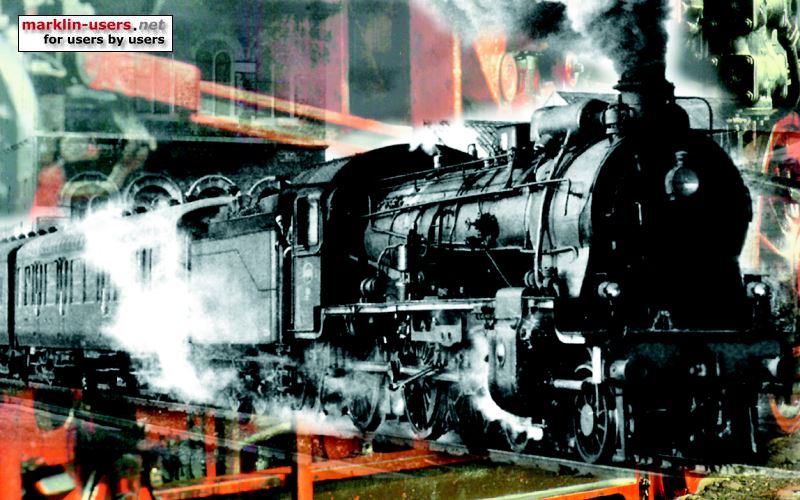

The boys dream came true. The main requirements: space, time to build, and money, at last made it possible. And I hereafter I wouldn't dream of building a layout without a turntable. The turntable is remotely controlled and the traffic pattern around it is enjoyable. The turntable makes it possible to turn the steamers in the right direction. The space required, including for the roundhouse, is significant, but it also gives you lot's of small tracks to put your locos, when not in service. On my current layout I have only space for a roundhouse with two tracks! But there are four other small tracks around it with coal, water and sand (not prototypically arranged, but I don't care), and this makes it a very good place to show your beauties for your friends, I think. The turntable reviewed here is Märklin's, in the current program. ROCO distributes a similar but smaller, and in my age we all know about the existence also of the old Märklin M-track turntable.
This one is for K-track connection, and you must make a large hole for it, and have space below it. Nothing for a floor layout of course. As I prefer C-track, and there wasn't space enough for the straight conversion tracks, I made my own curved transition track. It was very easy, see below. Tracks can be set every 7.5 degrees, in all 48 connections! Normally you don't set two tracks at two subsequent slots; there won't be space enough for two trains to be near the TT at the same time. Did you wonder about the "blind" connection in the track extension pack? I did, and they really don't have much purpose except for the looks. The bridge of the track is fed by cable, and the track connected to the bridge in each moment, gets power through this. If you operate your trains digitally you may want to get power all the time, but you don't have to connect all tracks; I didn't and it's good enough for me.
Bridge length: 310 mm Radius below surface: 167 mm Hole radius to fit: 170 mm Outer radius: 193 mm Radius of connected track ends: 232 mm Outer radius of roundhouse (Märklin, Vollmer ...): 600 mm Recommended tracks for roundhouse: two 2206.
In this simple way you don't get electrical connection between the tracks; the K-track is fed from the bridge when the bridge is at this track, so you only have to feed the C-track. Which is easy and cheap, and probably done already.
The operation is simple enough. To the right is a knob: in the middle there is no movement, to the right the bridge always turns clockwise, to the left counterclockwise. It's starts and move 7.5 degrees if you press the left switch (lower position), or set it at the upper position (continuous movement). The bridge always proceeds until comes to 7.5 degrees slot, but it stops here regardless if there is any track connected. This is inconvenient, but doesn't bother me much. Even if I run my layout digitally, I have no plans to replace this operation by:
I don't understand why not connection pieces for C-track is directly available, but this doesn't matter. |